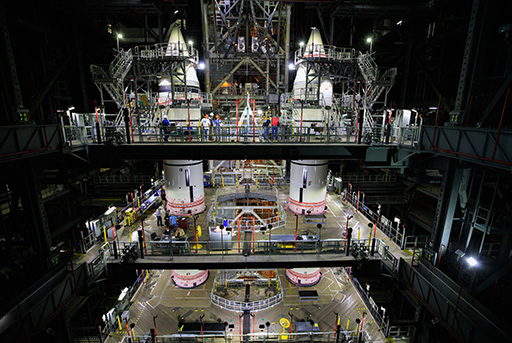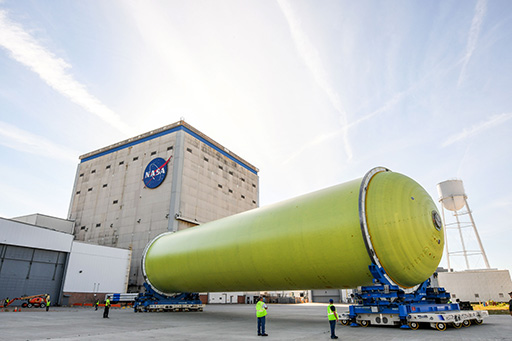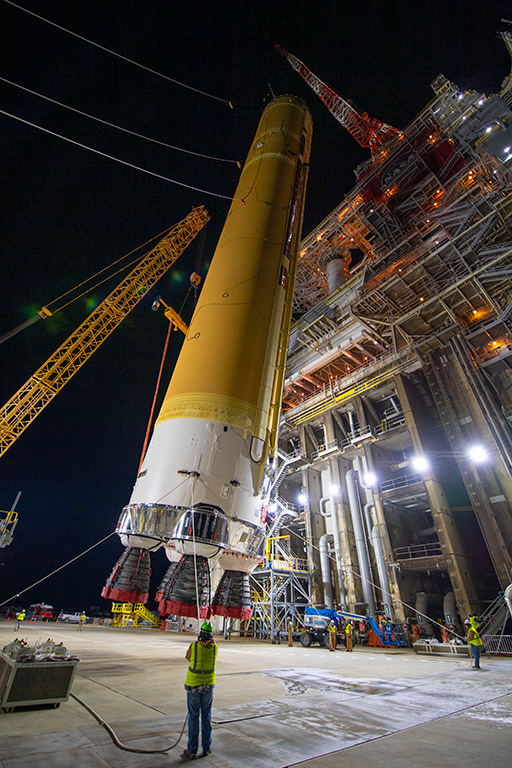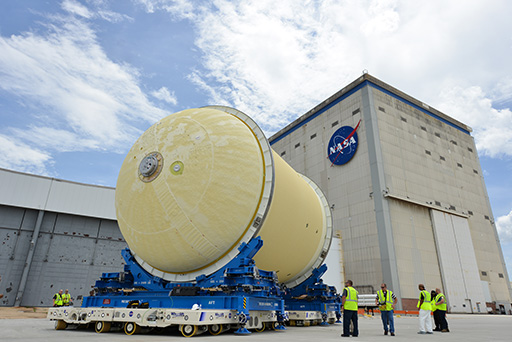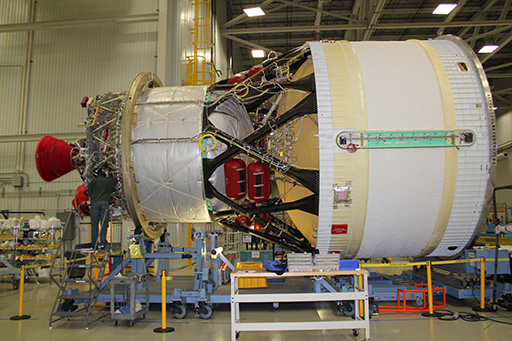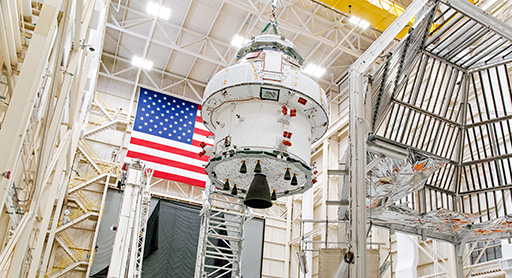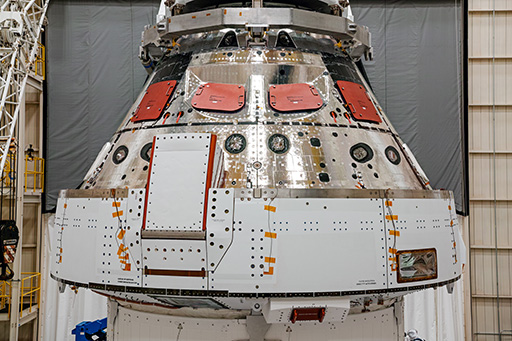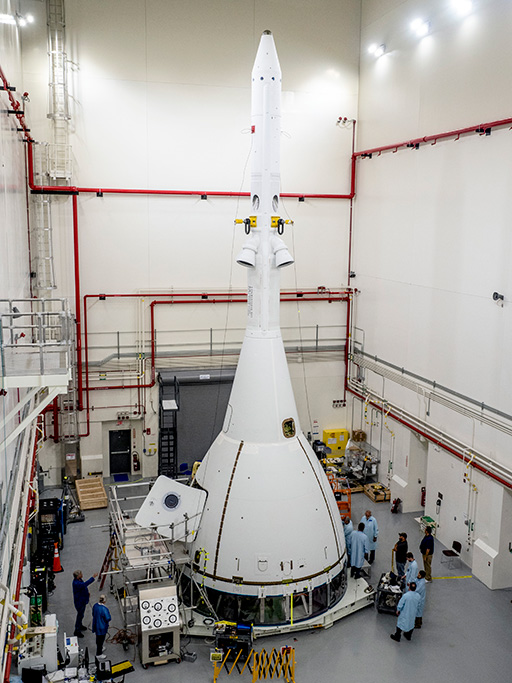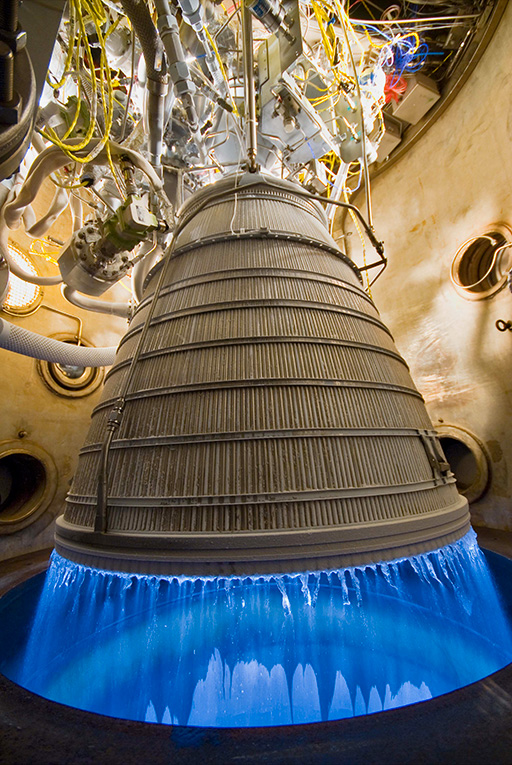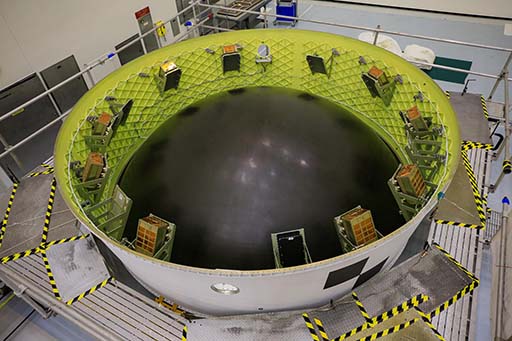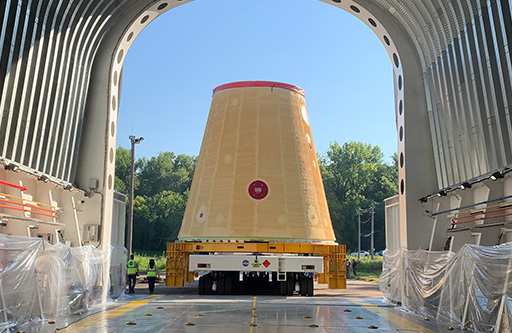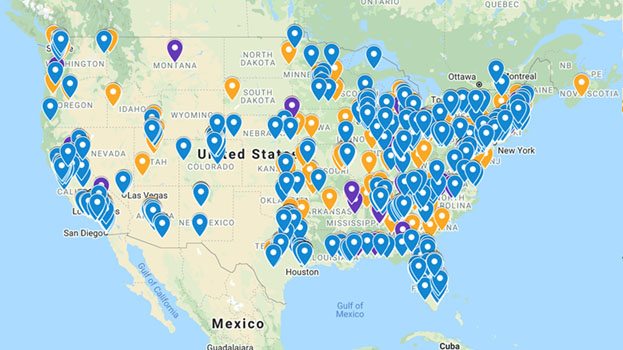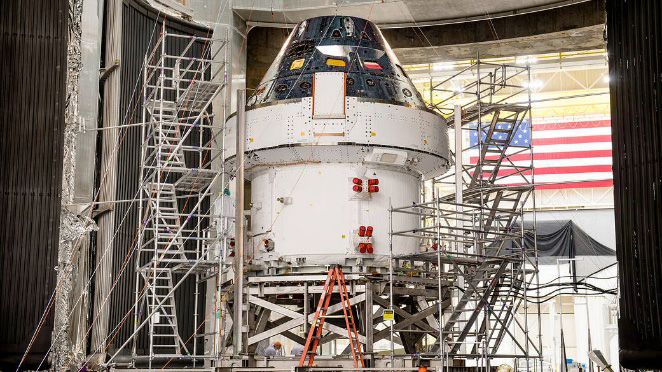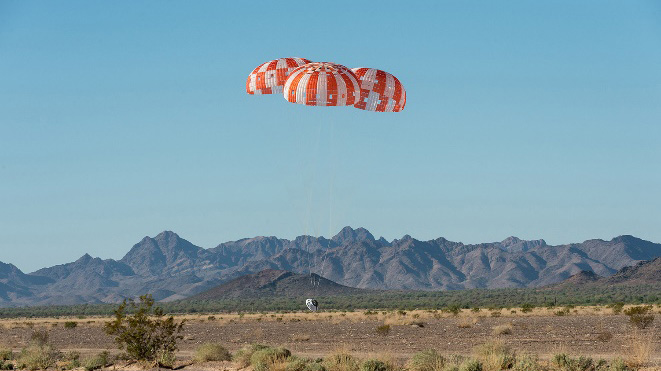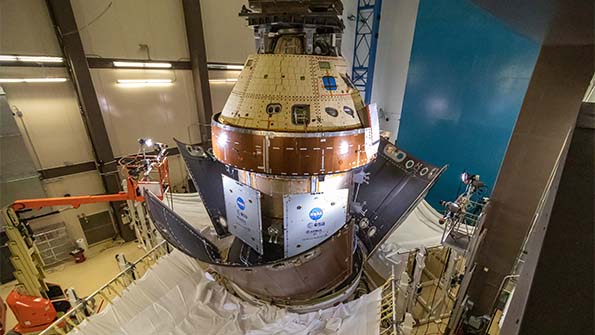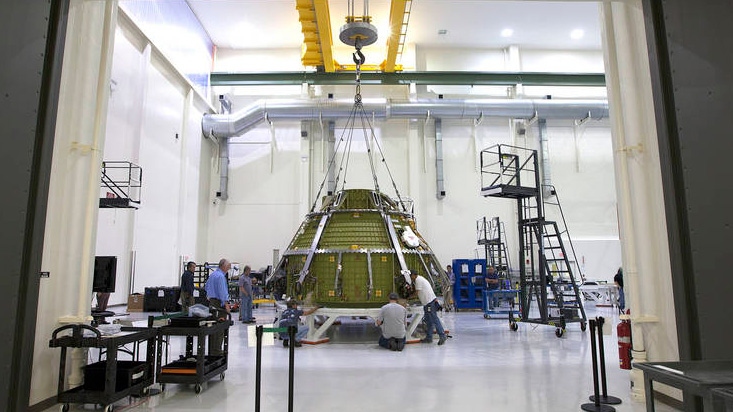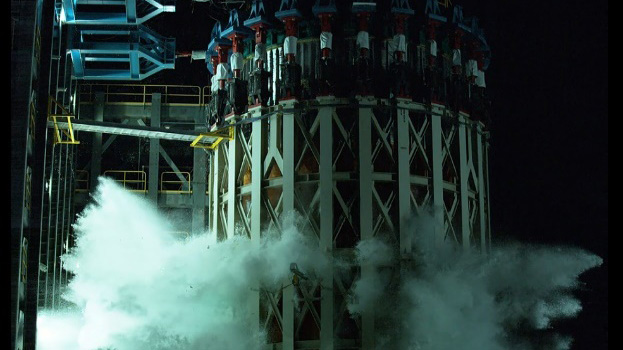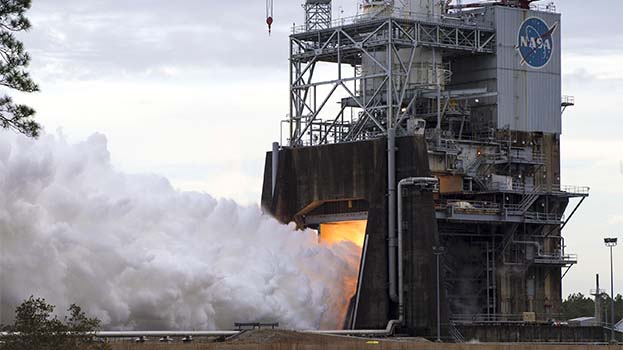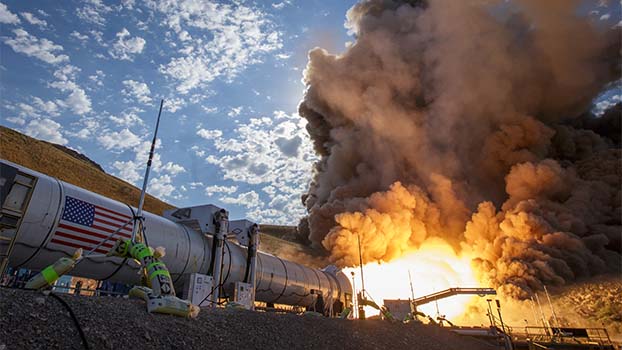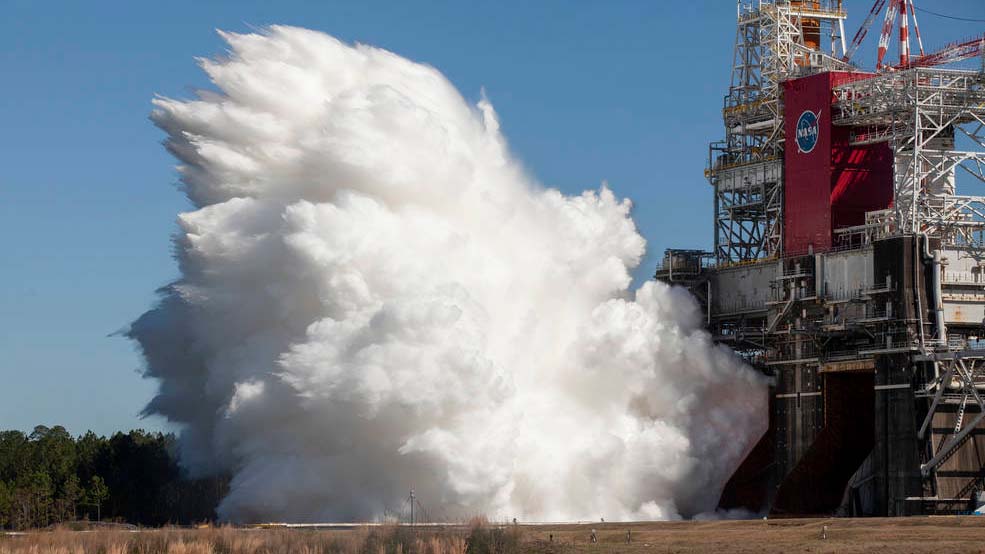- ABOUT THE MISSION -
Artemis I
All eyes will be on the historic Launch Complex 39B when the Orion spacecraft and the Space Launch System (SLS) rocket lift off for the first time from NASA's modernized Kennedy Space Center in Florida.
Artemis I will be the first in a series of increasingly complex missions to build a long-term human presence at the Moon for decades to come.
The primary goals for Artemis I are to demonstrate Orion’s systems in a spaceflight environment and ensure a safe re-entry, descent, splashdown, and recovery prior to the first flight with crew on Artemis II.
Mission Facts:
- Launch date: Nov. 16, 2022
- Mission duration: 25 days, 10 hours, 53 minutes
- Total distance traveled: 1.4 miIlion miles
- Re-entry speed: 24,581 mph (Mach 32)
- Splashdown: Dec. 11, 2022
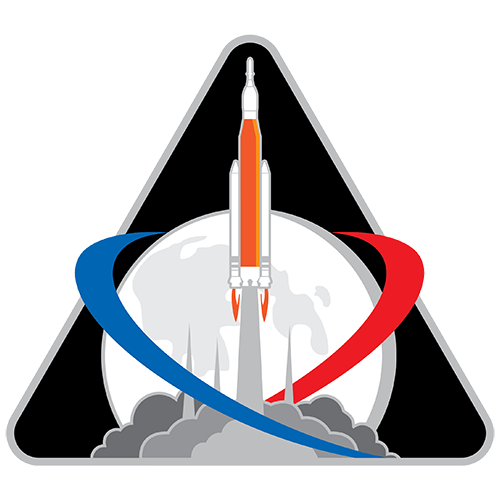
The mission patch for Artemis I showcases several elements within the design that carry symbolic meaning for this historic flight including the triangular shape and the colors of silver, orange, red, white, and blue.
- EXPLORE THE SYSTEM -
Click on parts of the system to learn more:
- FAST FACTS -
SPACE LAUNCH SYSTEM ROCKET
The most powerful rocket in the world, designed to send humans to deep space.
HEIGHT — 322 feet MASS AT LIFTOFF — 5.75 million pounds THRUST AT LIFTOFF — 8.8 million pounds PAYLOAD TO THE MOON — 59,000 pounds
ORION SPACECRAFT
Next generation spacecraft, designed for the demands of human missions to deep space.
CREW AND SERVICE MODULE HEIGHT — 26 feet PRESSURIZED VOLUME — 690.6 ft3 MASS TO THE MOON — 53,000 pounds RETURN MASS AT LANDING — 18,200 pounds




